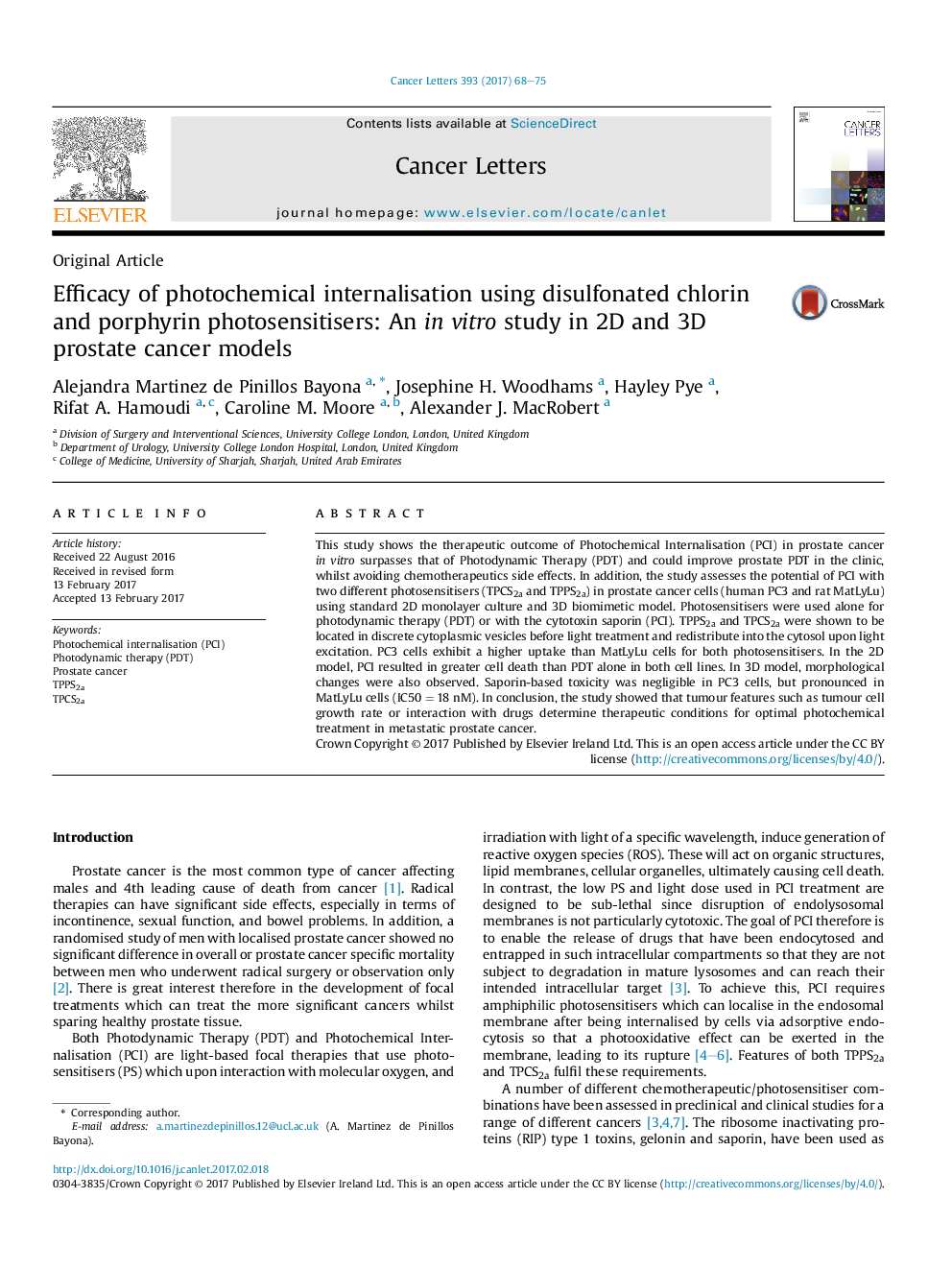| Article ID | Journal | Published Year | Pages | File Type |
|---|---|---|---|---|
| 5525653 | Cancer Letters | 2017 | 8 Pages |
â¢The efficacy of PCI surpasses that of PDT in vitro. PCI could improve prostate cancer treatment and minimise side effects.â¢3D model observations confirm findings in previous 2D PCI investigations.â¢Tumour features (i.e. doubling rate, interaction with drugs) will determine conditions for optimal photochemical treatment.
This study shows the therapeutic outcome of Photochemical Internalisation (PCI) in prostate cancer in vitro surpasses that of Photodynamic Therapy (PDT) and could improve prostate PDT in the clinic, whilst avoiding chemotherapeutics side effects. In addition, the study assesses the potential of PCI with two different photosensitisers (TPCS2a and TPPS2a) in prostate cancer cells (human PC3 and rat MatLyLu) using standard 2D monolayer culture and 3D biomimetic model. Photosensitisers were used alone for photodynamic therapy (PDT) or with the cytotoxin saporin (PCI). TPPS2a and TPCS2a were shown to be located in discrete cytoplasmic vesicles before light treatment and redistribute into the cytosol upon light excitation. PC3 cells exhibit a higher uptake than MatLyLu cells for both photosensitisers. In the 2D model, PCI resulted in greater cell death than PDT alone in both cell lines. In 3D model, morphological changes were also observed. Saporin-based toxicity was negligible in PC3 cells, but pronounced in MatLyLu cells (IC50 = 18 nM). In conclusion, the study showed that tumour features such as tumour cell growth rate or interaction with drugs determine therapeutic conditions for optimal photochemical treatment in metastatic prostate cancer.
